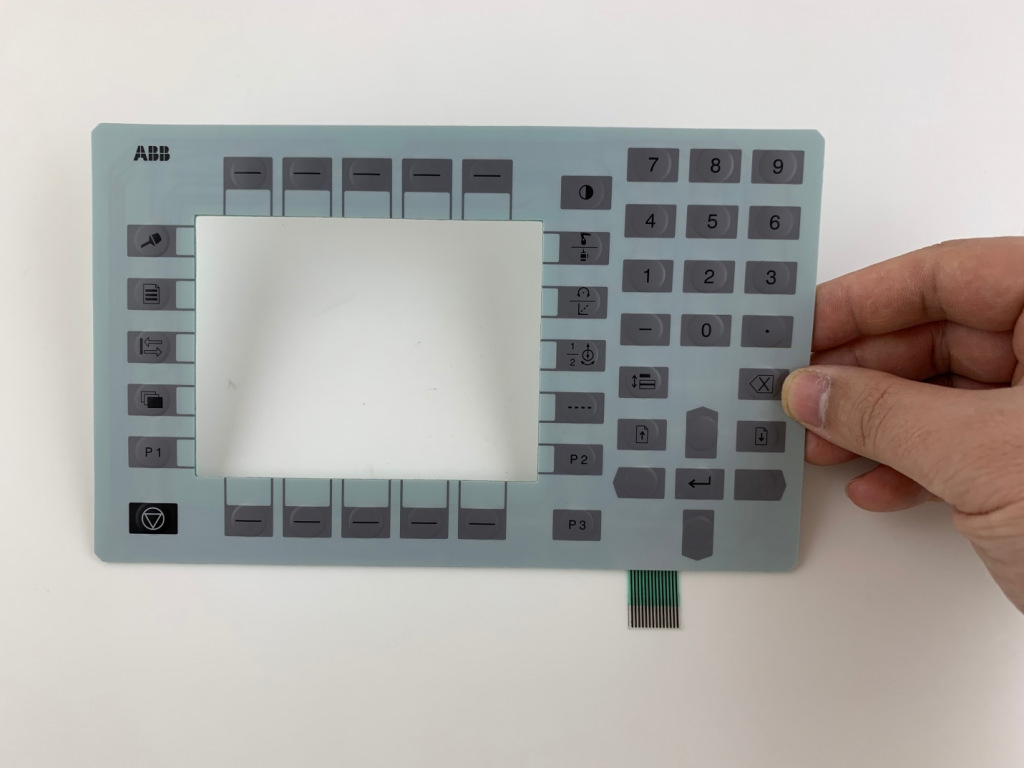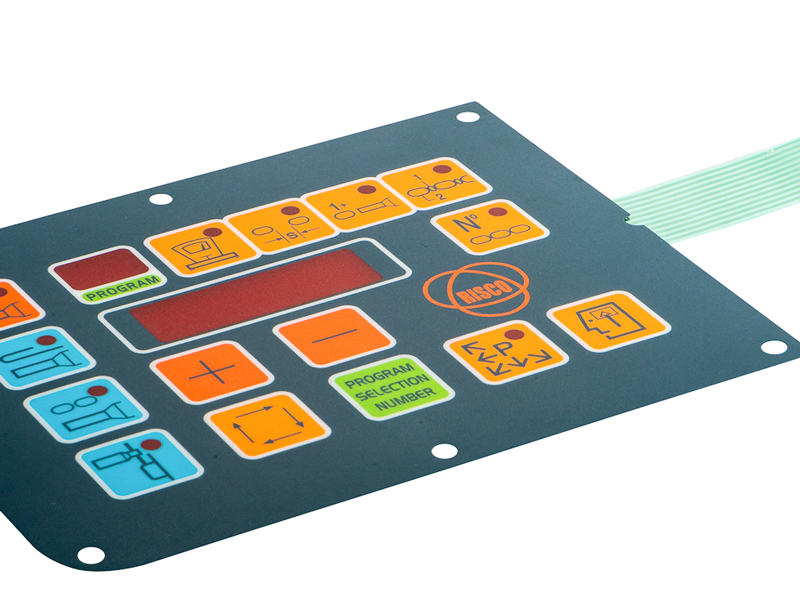Top Benefits of Using a Membrane Switch in Custom Control Panels
Top Benefits of Using a Membrane Switch in Custom Control Panels
Blog Article
The Advantages of Utilizing Membrane Layer Switches Over in Customer Electronic Devices
Membrane switches are significantly acknowledged for their considerable benefits in customer electronic devices, specifically in enhancing customer interaction and simplifying production processes. The flexibility in style allows for customized remedies that fulfill diverse customer requirements.
Enhanced Individual Experience
In today's affordable landscape of customer electronics, improved customer experience is vital; virtually 85% of individuals prioritize user-friendly user interfaces. Membrane changes play an important role in attaining this level of functionality. Their level, inconspicuous layout enables smooth integration into different gadgets, decreasing mass while keeping capability. This layout visual not only enhances the visual appeal but likewise adds to a much more streamlined customer communication.
The responsive feedback provided by membrane buttons is necessary for leading user actions, making certain that commands are registered accurately. This feedback system increases and minimizes errors individual complete satisfaction, promoting a favorable connection between the tool and the user. Moreover, the customizable nature of membrane layer changes allows makers to tailor user interfaces to details customer requirements, making tools more obtainable and welcoming.
In addition, membrane layer switches can incorporate backlighting and graphic overlays, further improving presence and functionality in varied atmospheres. This versatility makes sure that devices stay functional and user-friendly, despite the setup. In general, the integration of membrane switches right into consumer electronics substantially enhances customer experience, driving brand name commitment and satisfaction in a significantly open market.
Cost-Effective Manufacturing
Customer electronics producers are regularly seeking ways to balance quality with price, and membrane layer buttons provide an engaging service for cost-effective manufacturing. membrane switch. These elements are inherently easier than standard mechanical buttons, which reduces both production expenses and intricacy. The light-weight layout of membrane switches permits reduced shipping expenses and simpler integration right into portable gadgets, even more boosting their appeal in an open market

Producers can create membrane layer switches in high volumes, making use of economic climates of scale. This mass production capability makes sure regular top quality while considerably reducing per-unit costs. Furthermore, the materials used in membrane buttons, such as polyester and polycarbonate, are often less costly than those required for standard switch technologies, adding to general expense financial savings.
The production process for membrane layer changes commonly needs fewer steps and much less labor compared to various other switch kinds. This streamlined method not just saves money on labor costs however likewise accelerates time-to-market, enabling business to react swiftly to consumer need. Consequently, the combination of lowered material expenses and effective manufacturing procedures positions membrane changes as a smart investment for suppliers intending to supply top notch consumer electronic devices at affordable cost points.
Design Adaptability and Customization
While conventional mechanical buttons typically enforce limitations on style due to their mass and required placing devices, membrane layer switches offer unrivaled versatility and personalization alternatives for consumer electronic devices. This innovative technology allows designers to develop sleek, low-profile user interfaces that can effortlessly incorporate into different product aesthetic appeals, from mobile phones to kitchen devices.
Membrane switches can be produced in practically any form or size, making it possible for manufacturers to tailor the design to certain ergonomic and practical needs. This flexibility not only boosts individual experience but additionally enables creative layouts that align with brand name identification. The use of printed graphics on membrane layer changes uses the possibility for lively shades and intricate layouts, which can be conveniently modified without significant price ramifications.
Additionally, membrane switches can integrate several performances into a solitary layer, decreasing the demand for multiple parts and simplifying setting up procedures. This structured layout method lessens area and weight, making it ideal for portable consumer electronics. Generally, read what he said the layout flexibility and modification abilities of membrane layer switches empower makers to innovate, ultimately resulting in more easy to use and appealing products.
Sturdiness and Reliability
As technology remains to advance, the durability and integrity of membrane layer buttons have actually become critical factors to consider for makers in the customer electronic devices market. Membrane buttons are made to hold up against rough environmental conditions, including temperature level fluctuations, wetness, and dirt direct exposure. Their durable building and construction typically involves multi-layered products that offer an efficient obstacle versus pollutants, ensuring longevity and constant efficiency.
In enhancement to environmental resistance, membrane switches offer premium mechanical dependability. Unlike typical mechanical switches, which may wear out gradually, membrane switches make use of a covered design that reduces the danger of mechanical failure. The absence of relocating parts not only boosts their life-span but additionally decreases wear and tear, making them excellent for high-usage applications.
In addition, membrane switches can withstand a significant number of actuations without loss of performance, typically going beyond numerous cycles (membrane switch). This durability converts to lower substitute costs and decreased downtime for suppliers and customers alike. On the whole, the mix of ecological resilience and mechanical integrity makes membrane layer changes a tactical selection for consumer electronics, making sure that devices remain effective and functional throughout their desired lifespan

Streamlined Product Growth
The toughness and dependability of membrane changes significantly contribute to structured product growth in the customer electronic devices market. By incorporating these buttons early in the design procedure, producers can decrease the intricacy and number of components needed in their items. Membrane switches are portable and lightweight, enabling for more efficient room usage within click here for info devices, which can bring about simplified setting up procedures.

The simplicity of manufacturing membrane layer buttons additionally plays a critical function in product advancement. With contemporary printing techniques and products, manufacturing can be scaled efficiently, lessening preparations and minimizing waste. This results in lower manufacturing expenses, improving total profitability.

Conclusion
In verdict, membrane changes substantially boost customer electronic devices by offering an enhanced individual experience, affordable manufacturing procedures, and versatile layout alternatives. The combination of membrane switches over stands for a critical option for makers seeking to maximize item style and performance.
Membrane layer buttons are progressively acknowledged for their considerable advantages in customer electronic devices, especially in enhancing user interaction and simplifying production procedures. In addition, the products used in membrane switches, such as polyester and polycarbonate, are typically much less costly than those required for standard button modern technologies, contributing to overall cost savings.
The production process for membrane layer switches over generally requires less actions and less labor compared to various other switch types. Unlike standard mechanical buttons, which may wear out over time, membrane switches over make use of a sealed great site layout that minimizes the danger of mechanical failure.In conclusion, membrane layer changes substantially improve consumer electronic devices by supplying an enhanced user experience, cost-efficient production processes, and versatile style choices.
Report this page